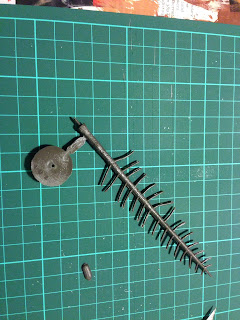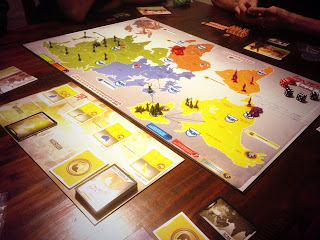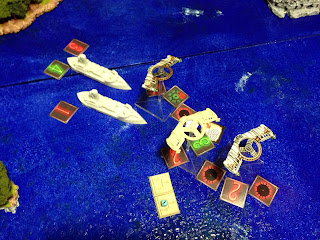For a little while I’ve been thinking about writing a series of reviews, each based on a single word, like epic, majestic, lucky... some form of adjective, like a word association review - which game matches that word to my mind and why.
To kick what will probably be a sporadic enterprise off, and in keeping with episode 323 of The Dice Tower, a podcast about board and card games that I am a sometimes contributor to, this review will be based on the word ‘epic’...
__________________
An epic game...
I could write about burgeoning space empires exploring and exploiting their way to domination, or fantasy slug fests where armies of untold steely eyed warriors do battle for dominion. But instead I want to focus on the historical, the type of game that charts the growth, development and ascendancy of empires and civilisation. No theme could so fully engulf the term epic as this.
There are many of course, some great and long lasting like the empires they simulate, there are others that are less so, they burst forth in a maelstrom of forum post laden excitement and fade into the footnotes of game history.
The game I want to talk about seeks to compass a scope and span of human history that no other game I know of dares to assault. It is Origins: How we Became Human, by the inestimable Phil Eklund. Now, I need to begin by stating the typical Eklund Caveat - this game is obtuse, unbalanced and complicated, and is certainly not for everyone, not even for most perhaps.
However, for those fascinated by the theme, Origins: How We Became Human is a civilisation game like no other.
Is it epic? Well four letters do little to expound on it. It is a game of evolution, beginning some 120,000 years ago it tells multiple tales as players guide their civilisations through this enormous gulf of time. In the first age players represent a variety of hominds, from Neanderthal to Cro-Magnon man, to Homo Floresiensis and Homo Sapien. The goal is the achievement of consciousness, and players develop social and technological practices that will help them spread, develop and unlock aspects of their developing selves, literally unlocking parts of their brains, and access to behaviors that may have been beyond them at an earlier stage.
In the second age the variety of hominds have disappeared and players represent cultural groups struggling to reach modern consciousness through the invention of metaphoric language - a Jaynesian and controversial perspective.
In the third age players struggle with ideologies, and seek to build and develop the most advanced and complete civilisation before the game winds to a close.
It is a game that seeks to explore not only the rise of civilisation, but the rise of us ourselves, it compasses not only the development of technologies, but explores the impact those technologies had on our potentials, it’s a controversial perspective on the evolution of modern human consciousness, and in every game, every player walks away with a story to tell.
This is not simple civilisation building, where the drive and output of generations of a people is anatomised and boiled away to a short race to build the biggest building. Origins How we Became Human, by Phil Eklund, is not an epic civilisation building game, it is a game the charts history as we know it. This is a game that seeks to explore, through play, the journey of our species from our humble beginnings to the scintillating glories of our modern achievements, in short, this game tells the story of us.
___________________
If you have any suggestions, words or phrases that would be fun to base reviews around for this series - feel free to add a comment and suggestion!
Cheers,
Giles.













































